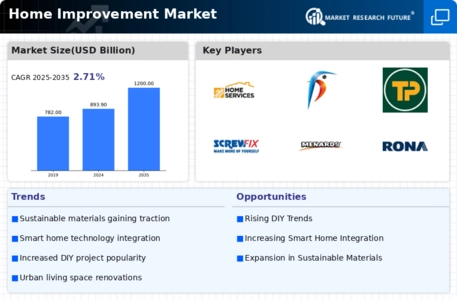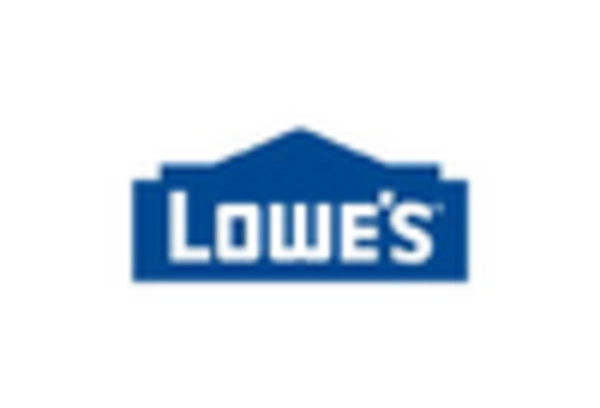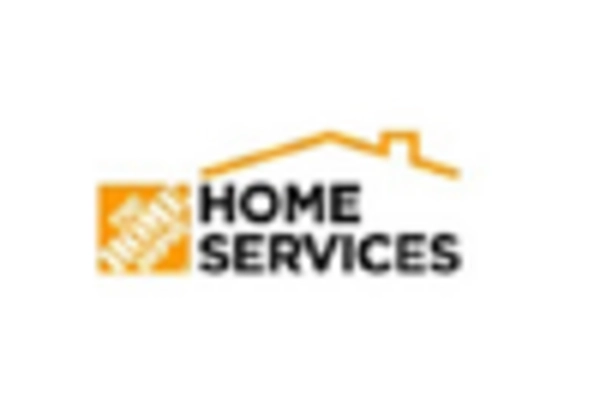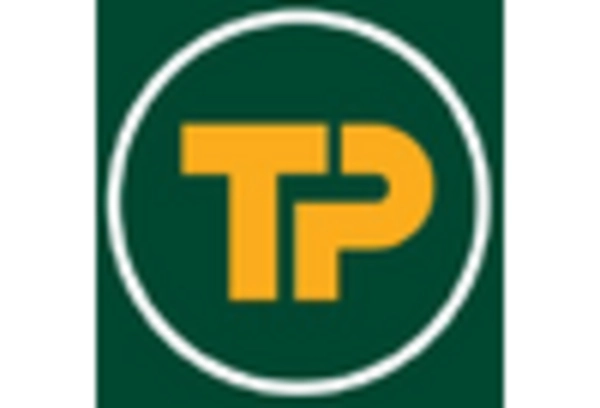Aging Housing Stock
The aging housing stock presents a compelling driver for the Home Improvement Market. Many homes, particularly those built several decades ago, require significant renovations to meet modern standards and preferences. Data indicates that a substantial portion of residential properties is over 30 years old, necessitating updates in areas such as plumbing, electrical systems, and energy efficiency. This trend creates a robust demand for home improvement services, as homeowners seek to modernize their living spaces. Consequently, the Home Improvement Market is likely to thrive as homeowners invest in renovations to enhance the safety, comfort, and aesthetic appeal of their properties.
Rising Disposable Income
Rising disposable income levels contribute positively to the Home Improvement Market. As consumers experience increased financial flexibility, they are more inclined to invest in home improvement projects. Recent statistics suggest that disposable income has seen a steady increase, allowing homeowners to allocate funds toward renovations and upgrades. This trend is particularly evident in emerging markets, where a growing middle class is eager to enhance their living conditions. The Home Improvement Market stands to gain from this shift, as higher disposable income levels enable consumers to prioritize home enhancements, thereby driving demand for various home improvement services.
Technological Advancements
Technological advancements play a pivotal role in shaping the Home Improvement Market. Innovations such as smart home technology and energy-efficient appliances are increasingly integrated into home renovation projects. The adoption of smart home devices has seen a significant rise, with estimates indicating that nearly 30% of households now utilize some form of smart technology. This trend not only enhances the functionality of homes but also appeals to environmentally conscious consumers. As technology continues to evolve, the Home Improvement Market is expected to adapt, offering new solutions that cater to the changing preferences of homeowners.
Increased Homeownership Rates
The Home Improvement Market appears to benefit from rising homeownership rates, which have been steadily increasing in various regions. As more individuals acquire homes, the demand for renovations and upgrades intensifies. Homeowners often seek to personalize their living spaces, leading to a surge in home improvement projects. According to recent data, homeownership rates have reached approximately 65%, indicating a robust market for home improvement services. This trend suggests that as more people invest in their properties, the Home Improvement Market is likely to experience sustained growth, driven by the desire for enhanced comfort and functionality in residential spaces.
Environmental Sustainability Trends
Environmental sustainability trends are increasingly influencing the Home Improvement Market. Homeowners are becoming more conscious of their ecological footprint and are seeking eco-friendly materials and practices in their renovation projects. The demand for sustainable building materials has surged, with a notable increase in the use of recycled and energy-efficient products. This shift not only aligns with consumer values but also reflects a broader societal movement towards sustainability. As a result, the Home Improvement Market is likely to adapt by offering innovative solutions that cater to environmentally aware consumers, thereby fostering growth in this segment.


















Leave a Comment